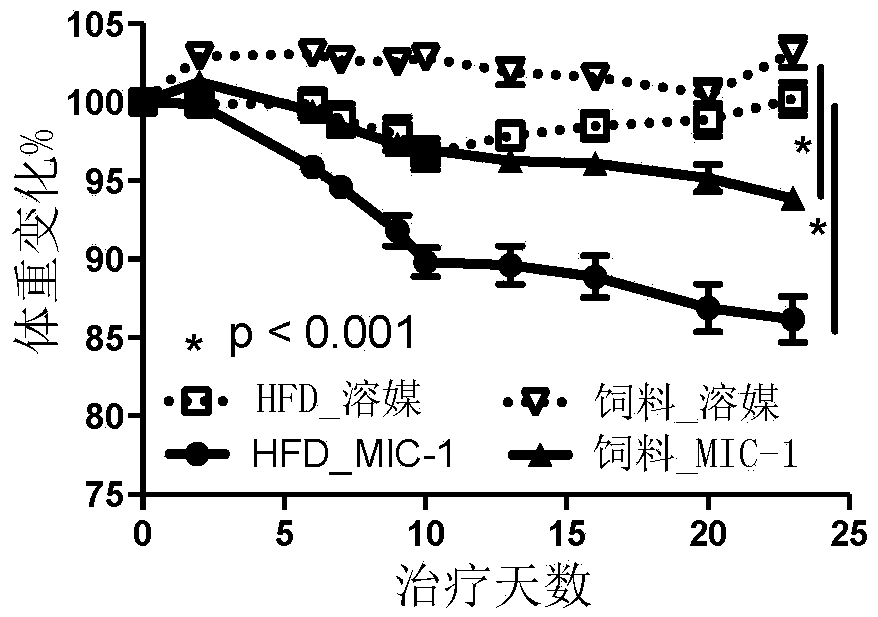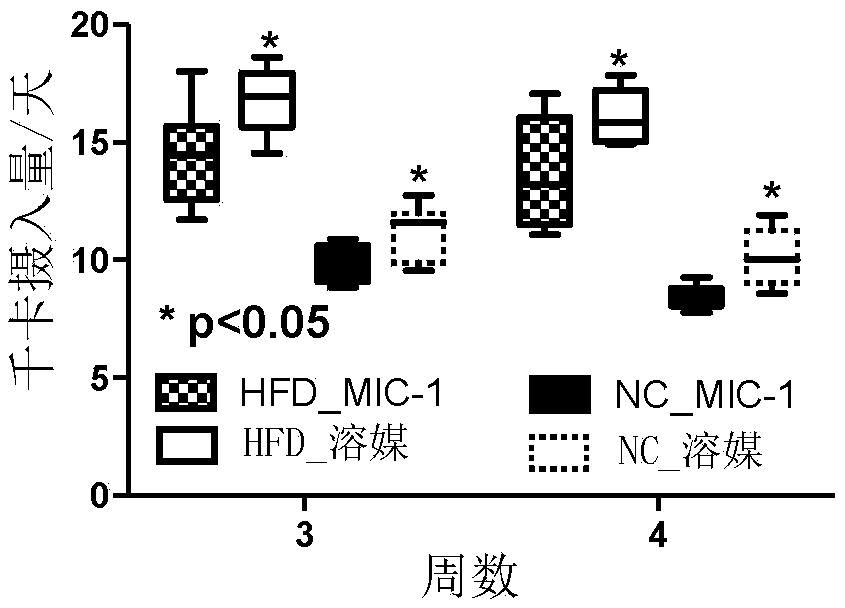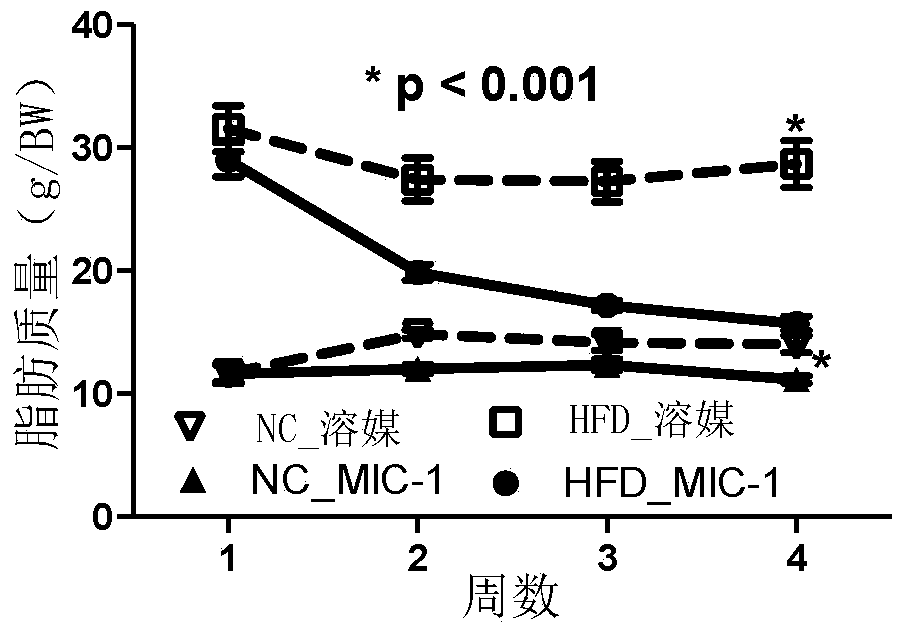Treatment of obesity and eating disorders
An obesity, appetite technique, applied in the field of treatment of obesity and eating disorders, capable of addressing issues such as the possible role of metabolic effects not ruled out
- Summary
- Abstract
- Description
- Claims
- Application Information
AI Technical Summary
Problems solved by technology
Method used
Image
Examples
example 1
[0150] Example 1 Effect of MIC-1 on weight loss in obese mice
[0151] The study was performed using groups of ten (10) male 22-week-old C57BL6 mice fed chow (CHOW) or diet-induced obesity (DIO) from a 12-week high-fat diet (HFD). Via an osmotic micropump (ag model2002; Durect Corporation, Cupertino, San Francisco, USA), according to previously described methods 21 , mice were infused with vehicle (CHOWc or DIOc) or recombinant murine MIC-1 (0.5 μg / gBW / day; CHOWm or DIOm). found that MIC-1 induces sustained weight loss accompanied by a reduction in food intake ( Figure 1A and B), which in HFD (14%) mice were chow-fed mice (7%, Figure 1A ); despite having much lower steady-state serum MIC-1 levels (6.3+ / -0.8 ng / ml vs 10.7+ / -1.3 ng / ml, respectively; p Figure 1C and D). Furthermore, inguinal adipose tissue from DIOm mice showed much lower normalized qPCR expression of the macrophage marker F4 / 80 (10.3+ / -1.9vs73.2+ / -10.5; p72 .
[0152] Therefore, the data obtained in this...
example 2
[0153] Example 2 Increased weight loss in mice infused with MIC-1 + leptin
[0154] Use vehicle, recombinant mouse MIC-1 (0.5 μg / g body weight / 24 hours), leptin (0.5 μg / g body weight / 24 hours), or MIC-1+leptin (0.5 μg / g body weight MIC-1+ 0.5 μg / g body weight leptin / 24 hours) continuous infusion (using a standard osmotic minipump) for six (6) days was fed to 11-week-old C57BL6 mice for the study. Leptin was recombinant mouse leptin derived from Creative Biomart (Shirley, New York, USA).
[0155] The results are shown in figure 2 middle. After 6 days, mice treated with MIC-1 + leptin had significantly lower body weight than that observed with MIC-1 or leptin alone, suggesting a substantial complementary interaction between the two adipokines. Furthermore, since the DIO mice used in Example 1 were leptin resistant, the results obtained here suggest that MIC-1 can also alleviate leptin resistance. This is also consistent with applicants' previous work showing that MIC-1 is ef...
example 3
[0157] Example 3 Significant increase in body weight loss in HFD mice infused with MIC-1+leptin
[0158] Vehicle, murine leptin (0.5 μg / g / day) and recombinant murine MIC-1 (0.5 μg / g / day) were infused as a binary combination into normal chow-fed male mice and fed a high-fat diet for 24 weeks Obesity (diet-induced obesity (DIO) mice) and leptin-resistant male mice were subsequently induced. The results are shown in Figure 3A and 3B middle. The greatest weight loss was found when mice were infused with a combination of MIC-1 and leptin. The magnitude of weight loss observed with the combination of MIC-1 and leptin was particularly pronounced for HFD mice.
[0159] The results confirmed that HFD mice were more sensitive to MIC-1-induced weight loss than chow-fed mice. In particular, it was observed in this study that the HFD mice lost proportionally more weight and continued to lose weight, whereas the weight loss of the chow-fed mice plateaued for about 11 days. Furthermor...
PUM
 Login to view more
Login to view more Abstract
Description
Claims
Application Information
 Login to view more
Login to view more - R&D Engineer
- R&D Manager
- IP Professional
- Industry Leading Data Capabilities
- Powerful AI technology
- Patent DNA Extraction
Browse by: Latest US Patents, China's latest patents, Technical Efficacy Thesaurus, Application Domain, Technology Topic.
© 2024 PatSnap. All rights reserved.Legal|Privacy policy|Modern Slavery Act Transparency Statement|Sitemap



